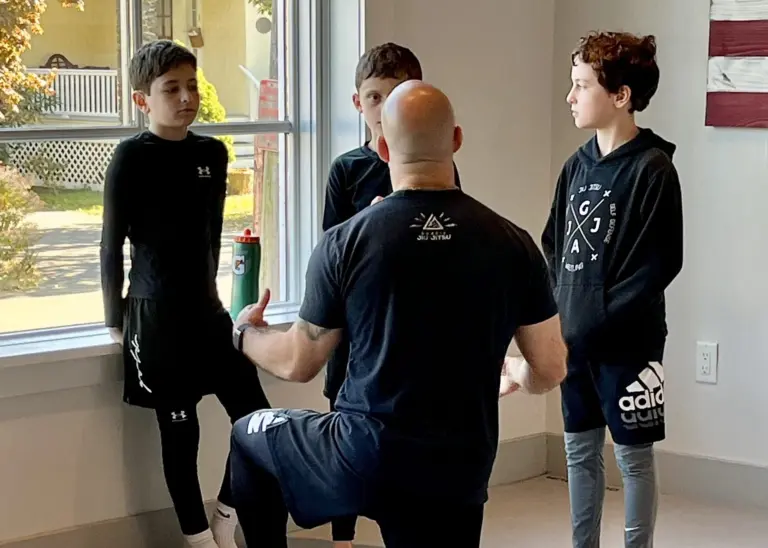By Fred Wu

At the Retired Men’s Association (RMA) Meeting on September 21, Hollister Sturges of the RMA introduced Page Knox, an adjunct professor in the Art History Department of Columbia University and a lecturer at the Metropolitan Museum of Art. Dr. Knox’s presentation was about the recent exhibition of Winslow Homer’s works, “Crosscurrents,” at the Metropolitan Museum of Art. “Crosscurrents” closed in July and is now on exhibit at the National Gallery in London. When first conceived, this exhibition was going to focus on Homer’s watercolors. But then the pandemic and the Black Lives Matter movement happened, and plans changed. “The Gulf Stream” painting, featuring a Black man struggling against the life-threatening forces of nature and society, then became the centerpiece of the exhibition.
According to Dr. Knox, Winslow Homer is often seen as the quintessential American artist. He never took training in Europe, and was mostly self-taught. Until this year, the largest retrospective on Homer was in 1996 at the Metropolitan. The exhibition, “Crosscurrents”, focuses on Homer as the artist of the Atlantic. Much of his life was spent on the Atlantic shores of the United States, and his travels took him to the Caribbean, Cuba, England and Paris, as he crisscrossed the Atlantic.
Dr. Knox then noted that Homer was born in 1836 and grew up in Boston. Later on he became a war reporter for Harper’s Magazine during the Civil War and was very influential to the reading public of the Northeast. Dr. Knox then discussed in some detail a series of slides of Homer’s works that demonstrated his fascination with struggle, from the Civil War and Reconstruction to hunting and rescues. As an example, Andersonville was a horrific, prisoner-of-war camp in Georgia. His painting “Near Andersonville” that he painted in 1865 showed a Black woman watching Union soldiers hoping that they will free her, but actually they are being marched into the prison camp. Some of his many other paintings were made after the Civil War but were based on his experiences during the war. “Prisoners from the Front” that he painted in 1866 illustrated the disparate nature of the Confederate soldiers – an old man unfit to fight, and a young man unsure what they are fighting for. Dr. Knox noted that only a small percentage of Southerners were actually slave-owners.
After the Civil War Homer returned to the South to see how people’s lives had changed. As an example of this phase of Homer’s life, Dr. Knox discussed “A Visit from the Old Mistress” that was painted in 1876, a scene from the end of Reconstruction in which an old white woman who no longer is the mistress of the estate is standing near her former slaves.
Later Homer’s works centered on life on the Atlantic Ocean. For example, “Waiting for Dad (Longing),” painted in 1873, highlighted life on the coast – a boy waiting for his father to return from the sea. As part of his later travels, Homer visited the Cullercoats, a coastal settlement in northeast England, and then he painted “Undertow” in 1886. This painting depicts two lifeguards rescuing two women and shows his talent for painting water.
Another trip occurred after his mother died when Homer went to the Bahamas for a vacation. Afterwards his paintings may have been depicting the impact of colonialism. For example, “A Garden in Nassau” painted in 1885 showed a Black child outside a wall, looking in. Homer often showed in his paintings the hardships of Black people trying to make a living. His watercolors show local scenes and landscapes, but he inserts symbols of imperialism, such as the barely visible British soldiers in “Coral Formation” that he painted in 1901. “The Gulf Stream” that was painted earlier in 1899 is the centerpiece of the “Crosscurrents” exhibition. It is one of a series of watercolors showing Black fishermen catching sharks. The 1906 reworked version of this painting included stalks of sugar cane, the foundation of slavery. Dr. Knox noted this painting may be symbolic of Homer’s aloneness, having lost his parents, and remaining unmarried. It is an image of desolation.
Homer lived the last 27 years of his life at Prout’s Neck, Maine, where the sea was ever-present. “Driftwood,” painted in 1909, was Homer’s last painting and according to Dr. Knox showed how small a man is compared with the forces of nature and the sea.
Through this presentation and discussion about some of Homer’s best-known works, Dr. Knox presented an insightful overview of Homer’s creativity. Dr. Knox ended her presentation by noting that Homer’s themes of racial struggle, war, and the forces of nature are just as relevant today as they were when he captured them on paper and canvas many years ago.
Note: The views expressed in this presentation are those of the speaker, and do not represent the views of the RMA.
The RMA’s next presentation will be by Captain Rick McGoey, retired US Navy submarine officer, who will discuss how the US almost lost “control of the seas” during the Soviet-US arms race and how one submarine made a difference. Captain McGoey served for 30 years in the US Navy in both active and reserve capacities and held various command positions. This presentation will focus on life onboard a submarine, preparations for extended deployments, experiences during submarine operations as well as a discussion of how submarine operations influenced global events during the Soviet-US Arms Race.
This presentation will occur on Wednesday, October 5, at 11:00 a.m. at the First Presbyterian Church in Greenwich as well as on webinar at: https://bit.ly/30lBj21. All those who attend this presentation at the Church must be vaccinated against Covid and have had a booster shot.
RMA speaker presentations are presented as a community service at no cost to in-person or Zoom attendees. The RMA does request that all eligible individuals consider becoming a member of our great organization, and thereby enjoy all the available fellowship, volunteer and community service opportunities that the RMA offers to its members. For further information, visit www.greenwichrma.org or contact Joe Mancinelli (mailto:jlmanc@optonline.net) or Peter Stern (mailto:members@greenwichrma.org).




